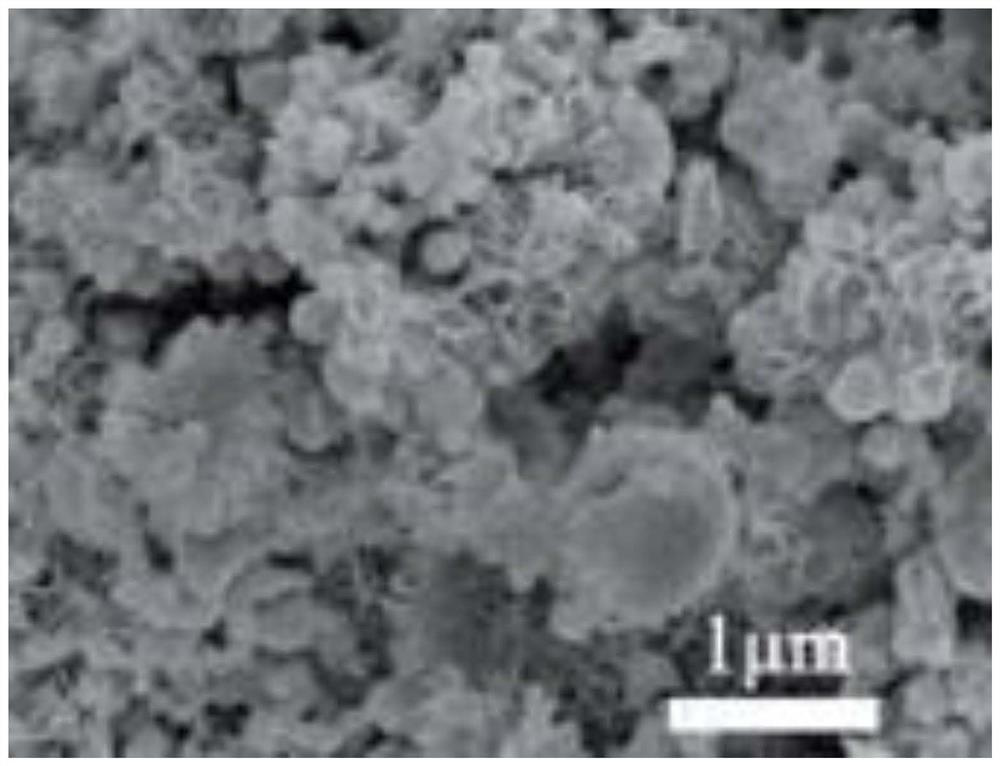Application of a triazine-carbazole polymer in organic electrode materials
An organic electrode and polymer technology, applied in battery electrodes, circuits, electrical components, etc., can solve problems such as reducing the cycle stability of potassium ion batteries and limiting the application of organic electrode materials.
- Summary
- Abstract
- Description
- Claims
- Application Information
AI Technical Summary
Problems solved by technology
Method used
Image
Examples
Embodiment 1
[0030] This example is the application of triazine-carbazole polymers as a negative electrode material of potassium ion battery, specifically:
[0031] The triazine-carbazole polymer is used as the active material, and the working electrode is formed with the conductive agent and the adhesive, and then the CR2032-type button battery is composed of the counter electrode, the diaphragm, and the electrolyte. Where the electrode is metallic, the diaphragm is glass fiber (Whatman, GRADE GF / D), and the electrolyte is KPF. 6 Solution (KPF 6 The concentration of 0.8 mol / L, the solvent is a mixed solution of EC and DEC having a volume ratio of 1: 1.
[0032] The working electrode is prepared by the following method: a triazine-carbazole polymer, a conductive carbon black / multi-wall carbon nanotube / single-walled carbon nanotube, and polyvinylpyrrolidone are mixed in accordance with the mass ratio of 7: 2: 1, wherein the conductive Carbon black, multi-wall carbon nanotubes and single...
Embodiment 2
[0038] The tri-carbazole polymer of the present embodiment also acts as a negative electrode material of a potassium ion battery, which is substantially identical to Example 1, which is only slightly different from the preparation process of the tri-carbazole polymer, and the three polymers of the present embodiment. - The specific preparation process of the carbazole polymer is:
[0039] (1) In a nitrogen atmosphere, the carbazole is dissolved in tetrahydrofuran to form a carbazole-containing solution of molar concentration of 0.7 mol / L; then under the cold bath condition (cold bath temperature is 0 ° C), add drop The n-buthac-containing n-hexane solution (n-butyl lithium has a molar concentration of 1.5 mol / L), after the dropwise addition (the molar ratio of carbazole and n-butyllithium is 1: 1), continued to stir 30 min, then remove Cold bath, returned to room temperature, lithium salt solution of carbazole;
[0040] (2) At room temperature and nitrogen atmosphere, the carb...
Embodiment 3
[0043] The tri-carbazole polymer of the present embodiment also acts as a negative electrode material of a potassium ion battery, which is substantially identical to Example 1, which is only slightly different from the preparation process of the tri-carbazole polymer, and the three polymers of the present embodiment. - The specific preparation process of the carbazole polymer is:
[0044] (1) In a nitrogen atmosphere, the carbazole is dissolved in tetrahydrofuran to form a carbazole-containing solution having a molar concentration of 1 mol / L; then in the cold bath condition (the cold bath temperature is -15 ° C), dripping The n-butylhydric alkane solution (n-butyl lithium has a molar concentration of 2.0 mol / L). After the dropwise addition (the molar ratio of carbazole and n-butyllithium is 1: 1), it is continued for 30min, then removed Cold bath, returned to room temperature, lithium salt solution of carbazole;
[0045] (2) At room temperature and nitrogen atmosphere, the car...
PUM
 Login to View More
Login to View More Abstract
Description
Claims
Application Information
 Login to View More
Login to View More - R&D Engineer
- R&D Manager
- IP Professional
- Industry Leading Data Capabilities
- Powerful AI technology
- Patent DNA Extraction
Browse by: Latest US Patents, China's latest patents, Technical Efficacy Thesaurus, Application Domain, Technology Topic, Popular Technical Reports.
© 2024 PatSnap. All rights reserved.Legal|Privacy policy|Modern Slavery Act Transparency Statement|Sitemap|About US| Contact US: help@patsnap.com










